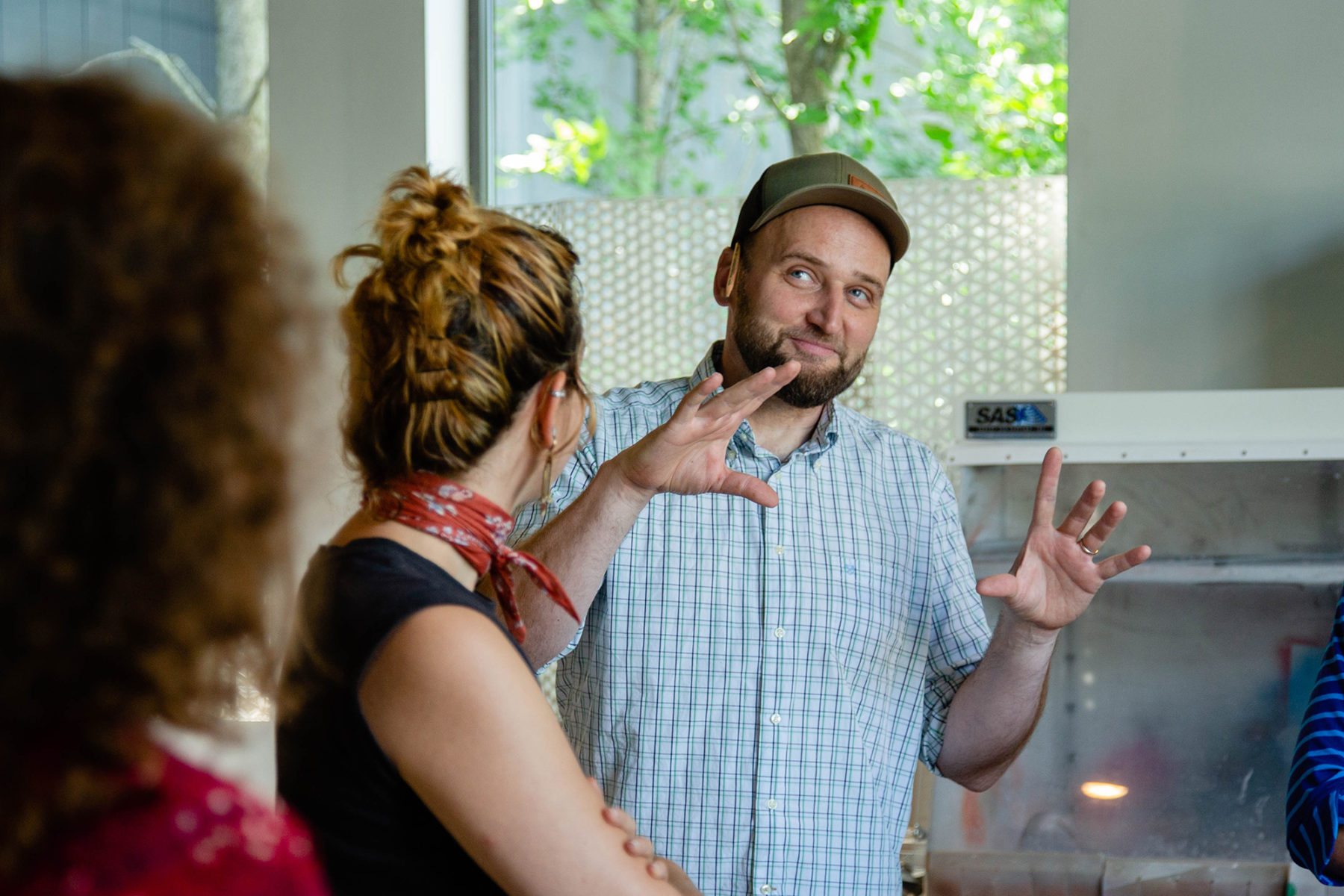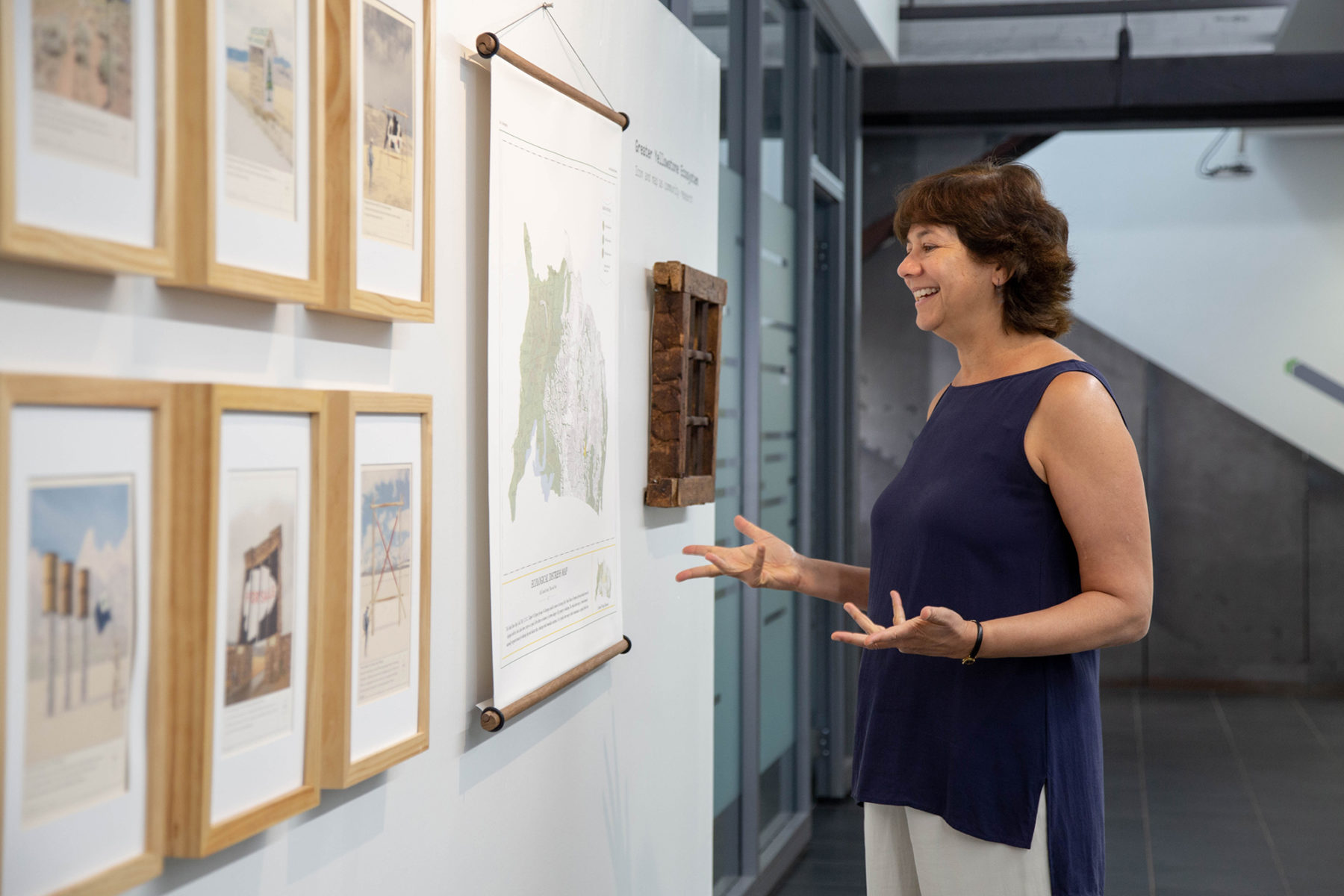Sustainability, Humor, and Action: A Conversation between Tamar Warburg and David Buckley Borden

 Sasaki
Sasaki

Sasaki’s summer artist-in-residence, David Buckley Borden, is a visual artist who promotes environmental awareness and ecological appreciation through his work. In his practice, he combines landscape, creativity, and community engagement, resulting in bold, thought-provoking installations and exhibitions. We brought together David and Tamar Warburg, Sasaki’s director of sustainability and resilience, for a conversation on the intersections of their work.
This interview has been edited and condensed for clarity.
David: Each of my projects has a mission or agenda. Something that sets my work apart from other environmental artists is that I have the goal of causing awareness and direct action from the very conception of a project. For me, my work is a platform to engage the public. I don’t do work in a vacuum, all by myself. Other people are part of the process from the beginning to the end, which is critical in getting a response from the public. You need to push the next step, and deliver a call to action—awareness on its own is not enough.
Tamar: Yes, each of your artworks is a call to action; that’s something we both have in common. Here at Sasaki we are trying to take knowledge, which gives insight, and then translate that insight into action, into designing differently. Whether it’s in urban planning or landscape or a building, that’s our call to action.

David during a workshop with Sasaki designers
David: That’s a great question. In my house we trade in visual currency, if you will. I’m trying to tell stories, and the storytelling is what makes it interesting. People want a kind of didactic messaging, not doomsday messaging. So I try to make it accessible, with some humor. Again, I’m not trying to make light of the issues, but really, humor is an engaging way to get people involved in the conversation. Typically, my installations are playful and fun; sometimes it’s at odds with the backstory, but I think that tension makes the work interesting.
Tamar: Ah, totally! First of all, I wish we could use humor in buildings. That is your great privilege and advantage as an artist. So, more power to you, David. There are two kinds of storytelling that we use as a call for action in architecture and you’re exactly right, they seem like opposites. The first is, as you called it, “doomsday”. But we also have another narrative: the “wellness narrative.” Harmony with our environment is the healthier way for us to survive and thrive. At the level of a city, resilience is the ability to adapt to our changing climate, and repair the world to the greatest degree that we can. That’s the storytelling we can offer as an alternative to what is admittedly true: that our house is on fire.
David: In many of my projects, humor is a way that people loosen up and talk about their concerns—it’s an important part of community engagement. In your discipline, a goofy project is probably not in the works, but, as part of the community engagement process, I think there’s definitely a place for humor.
Tamar: I’m looking for opportunities now, David. You’ve inspired me. We have to figure out some way to integrate your sensibility into our work because it would hugely benefit.
David: Based on the response I’ve seen from my work, I think a lot of designers think that humor is a really great way to talk about environmental issues. It’s a little unconventional, but that doesn’t mean non-valuable. It just means it hasn’t been tested in these walls. I wish we could do more stuff like this, I think there’s opportunity to use humor even more.

Tamar commenting on her favorite of David’s pieces
David: I’m inspired by the potential of the future. I mean at this point, it can really go any way in terms of our environmental future and the tendency towards a planet that is increasingly inhospitable. But I’m inspired by the future because I think people will rise up. I think they’ll step up when it comes to it. It’s already happening—every day you hear a great inspiring story about someone stepping up in terms of being an environmental steward. I’m generally hopefully and positive.
Tamar: I’m most inspired by the greatest design of all, which must be this planet. No matter what we ever make, it’ll never be as intricate and as awesome and as fascinating as the incredible diversity of life on this planet. It is humbling as a designer. And I too, like you, David, really believe in people’s power to wake up. You say rise up. I often think wake up. No matter how hard it is to rise up, I do think people are going to wake up. We will realize again the universality of people and how much more important that is than any differences.
David: Well said.